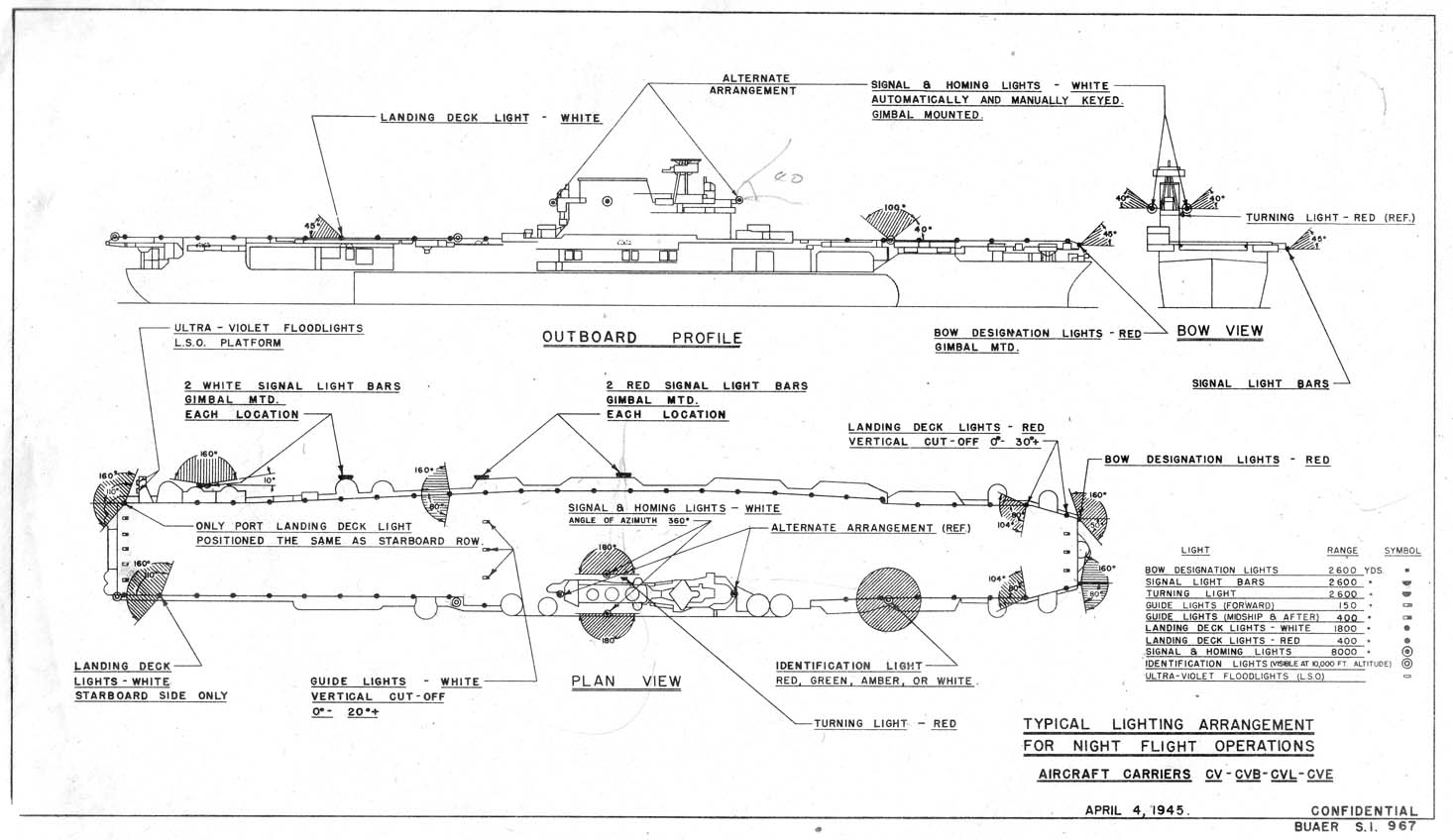Aer-E-342-BEM
CV/S64
CONFIDENTIAL
Subj: Aircraft Carrier Lights for Night Flight Operations.
- - - - - - - - - - - - - - - - - - - - - - - - - - - - - - - - - - - -
when the barriers are down or the deck is not ready, is located at landing signal station. Its control is by a switch located in the barrier area which la operated by the flight deck officer. Barrier indicator lights are being developed to indicate primarily to the barrier operators which barriers are up. This system will permit more intelligent use of barriers and will tend to speed up night operations.
(c) Landing Observer's Signal System (Circuit PL): This system provides the landing observer with a means of indicating to the landing signal officer that an approaching airplane is making an improper approach. It consists of a portable contact maker at the landing observer's station in the starboard after gallery walkway and a type B6 bell and a red dial lamp type indicator at the landing signal stations.
(d) Deck Signal Wands: A wand light consisting of a 5 inch length of luscite tube inserted in a standard flashlight. These wands are used in pairs by taxi directors using basically the same signals as used in daylight operations.
4. The approach light is the only special light Installed in aircraft for night carrier operations. It is located in the leading edge of the port wing outboard of the propeller arc. The light is actuated by an automatic switch when the arresting hook is in the down position. The approach light circuit has an additional switch (AN3015) paralleling the automatic switch. This switch permits lighting the approach light while practicing night carrier landings ashore. Care should be taken to install the guard provided to secure this switch in the open position prior to carrier operations.
5. It should be noted that manufacture, installation and maintenance of the lights and signal systems discussed above, which are attached to the ship or connected to the ship's power supply, are under the cognizance of BuShips. Characteristics of the lights, however, are subject to the approval of BuAer.
6. To Insure the proper functioning of the lights and signal systems, strict inspection must be maintained. All circuits should be energized prior to each night's flight operations to assure that all circuits are in operating condition. Once each week all fixtures should be cleaned and checked for burned out lamps. Care should be exercised that proper size lamps are used for replacements.
7. Add to Index of Aircraft Carrier Bulletins the following and delete Aircraft Carrier Bulletins 4 and 6:
| Bulletin No |
Subject | Classification |
| 11 | Aircraft Carrier Lights for |
Confidential |

- 4 -
